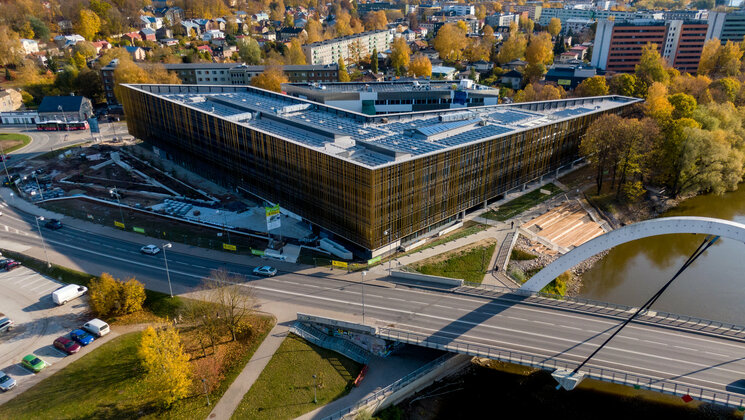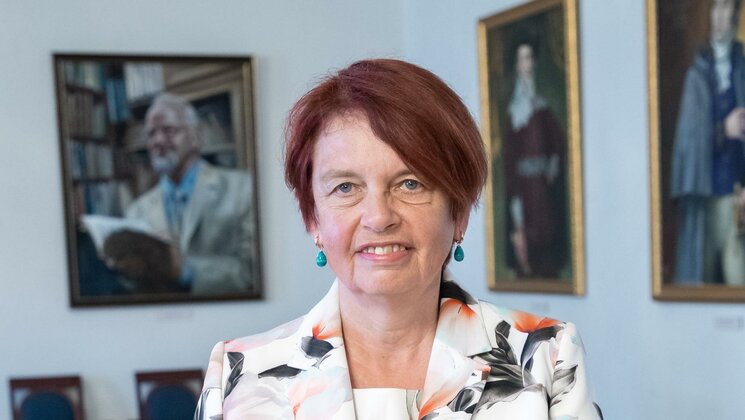Career in science offers new knowledge and freedom

One of this year’s 6,000-euro young talent awards of the L’Oreal Baltic For Women in Science Programme was granted to Mari-Ann Lind, University of Tartu doctoral student in animal ecology.
Lind reached her doctoral studies quite by chance – she had no such plans when she started her bachelor’s studies. At one point while pursuing her master’s degree, she even ruled out doctoral studies as a future possibility for her because the scientist’s career seemed difficult and insecure. “More doctoral students graduate from the university than can get a job here,” she explained why she had such thoughts.
However, if life in science still seems exciting enough, taking up doctoral studies is the way to go. Today, Lind is very happy with her choice because doing research suits her very well. For example, the researcher’s job involves a lot of freedom and she can study topics that are closest to her heart. “I learn something new every day,” says Lind. There are also other positive aspects: researcher’s life gives enough flexibility to choose your working hours. As Lind is a night person, this is very suitable, and so she works at the time when she is the most productive – at night.
Currently, her main focus is on writing her doctoral thesis titled “Internal constraints on energy processing and their consequences: an integrative study of stress, digestion and antimicrobial defenses in greenfinches”. This covers ecology and physiology and their different subfields, which are usually studied separately. One research problem of the thesis concerns the birds’ feathers: whether increased yellowness of feathers in greenfinches is associated with more parasites on the bird. Yellow feathers are important for greenfinches because they are a signal for the opposite sex of the bird’s high quality as a mate. Yellow plumage is inherited, but the intensity of coloration may be affected by both genetics and the environment.
Lind explained that the importance of her doctoral thesis lies, for example, in that the family life of people and birds is actually more similar than generally thought. By studying how greenfinches find a mate, we can make conclusions about people. Although people do not have colourful feathers to attract a partner, the opposite sex is often attracted by fancy cars, big muscles or good education. And while mammals generally do not have monogamous relationships, it is a rule for most birds. This is another similarity between people and birds.
In spring Lind received an award of the L’Oreal Baltic For Women in Science Programme. With the help of the fellowship, she plans to study the impact of anthropogenic pollution on flounder in the Baltic Sea. She wants to find out whether, as a result of long-term pollution, fish have got evolutionary cancer defence mechanisms, for example, whether their gut microbes help them better cope with carcinogenic pollutants.
Earlier findings have suggested that gut microbiome and the formation of cancers may be mutually related. Lind wants to find out whether such relations exist. The results of the research will help better understand the impact of pollution on fish, which in turn enables to create more effective environmental measures and better control the release of pollutants into the environment. Research into animal cancers can also offer innovative ideas for medicine, such as for human cancer treatment.
Lind explained that the Baltic Sea has been polluted for a long time already. However, there are both cleaner areas and more contaminated areas in the sea. For the research, the doctoral student will make an experiment: fish from cleaner and more polluted areas are taken to the laboratory, where they are exposed to a pollutant similar to those found in the sea. Then she will explore whether fish who are already familiar with pollution cope with it better and whether they develop fewer cancers than those brought from the cleaner areas of the sea.
Lind is conducting the research on flounders because they live on the sea bottom where all kinds of pollutants are deposited. Flounders also lead a fairly settled life and do not migrate much. When you catch a flounder from an area, you can be quite sure that not only the specific fish grew up there but also its grandfather came from the same place.
In addition to the fact that the monetary award allows her to study the topic she likes, the fellowship was also a great recognition for Lind, and increased her confidence and self-belief. “It gave me confidence that I am sufficiently good and capable to succeed in science and to pursue a scientific career,” she said. She considers this award extremely important, most of all because it draws attention to the role of women in science. If you look at statistics, it seems to Lind that it is slightly more difficult for women to succeed in science than for men. Generally, there are more female students than men at master’s and doctoral level but after that the proportion of women in science gradually decreases.
Lind believes it is crucial to have female role models. For example, her own supervisor Tuul Sepp often publicly comments on issues related to her field of research. “It is important because this way people will become aware that also women are well-spoken and competent,” said Lind.






